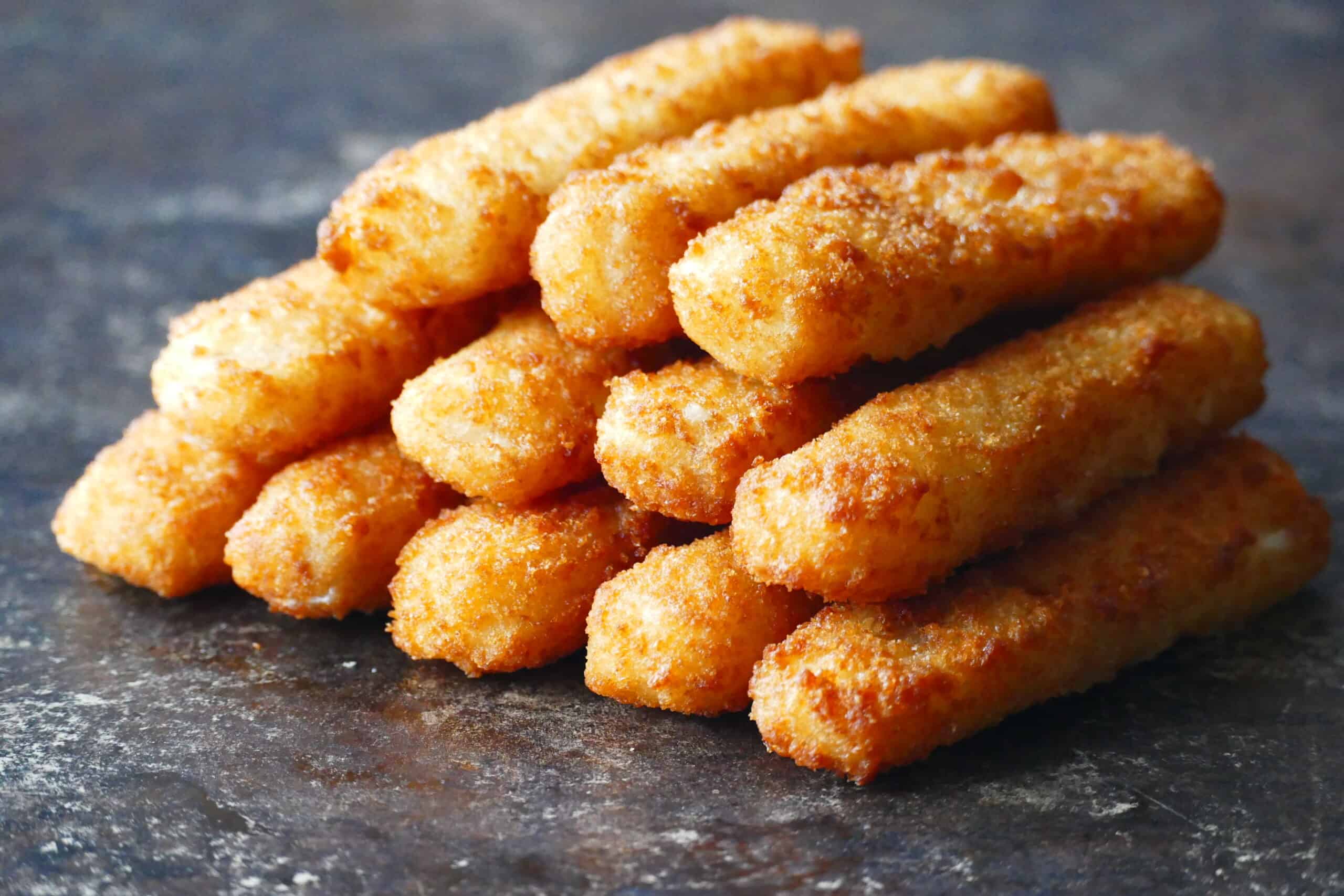
Ever wondered what's really in those crispy, golden fish sticks that seem to be a staple in every freezer? Well, you're in for a treat, or maybe a surprise! Fish sticks, those convenient, breaded morsels, have a lot more going on beneath their crunchy exterior than meets the eye. From their nutritional content to some eyebrow-raising facts, there's plenty to learn about this popular seafood snack. Are fish sticks actually good for you? Yes, but with a few caveats. Packed with proteins and essential nutrients, they can be a part of a balanced diet, provided they're not all you're munching on. So, let's dive into the world of fish sticks and uncover 20 nutrition facts that might just change the way you view your next seafood dinner.
Key Takeaways:
- Fish sticks are a good source of protein and omega-3 fatty acids, but watch out for added salt and unhealthy coatings. Baking instead of frying and pairing with veggies can make them a healthier choice.
- When choosing fish sticks, opt for whole fillets, minimal packaging, and sustainable brands. Get creative by making homemade fish sticks and teaching kids about healthy food choices.
What Are Fish Sticks?
Fish sticks, known in some countries as fish fingers, are processed food made from white fish like cod, haddock, or pollock. They're coated in breadcrumbs or batter and then fried or baked. This convenient seafood option has become a staple in freezers around the globe, offering a quick and relatively easy-to-prepare meal. But what's really in these oceanic delights, and how do they stack up nutritionally? Let's dive into the facts.
-
Fish sticks are primarily made from lean white fish, which is a good source of high-quality protein. This means they can be a great part of a balanced diet, providing essential amino acids without a lot of fat.
-
They often contain added salt, which can increase their sodium content. For those watching their salt intake, it's important to check the nutrition label.
Nutritional Benefits of Fish Sticks
Despite their convenience and kid-friendly appeal, fish sticks also offer some nutritional benefits worth noting.
-
Rich in Omega-3 Fatty Acids: While the content may vary depending on the type of fish used, fish sticks can be a source of omega-3 fatty acids, beneficial for heart health.
-
Good Source of Vitamins and Minerals: Fish sticks can provide vitamins like vitamin D and B12, along with minerals such as iodine and selenium. These nutrients are vital for maintaining good health, supporting the immune system, and ensuring proper thyroid function.
-
Low in Saturated Fat: Compared to red meats, fish sticks are lower in saturated fat, making them a healthier choice for those looking to reduce their risk of heart disease.
How to Choose Healthier Fish Sticks
Not all fish sticks are created equal. With a variety of options available, here are some tips for selecting the healthier choices.
-
Look for Whole Fish Fillets: Some brands use minced fish for their sticks, which can dilute the nutritional value. Opt for those made from whole fillets for a better quality product.
-
Check the Coating: Breadcrumbs or batter can add unnecessary calories and fat. Choose fish sticks with a lighter, whole-grain coating to keep it nutritious.
-
Avoid Trans Fats: Some fish sticks may contain trans fats, which are harmful to heart health. Always read the label to ensure you're choosing a trans fat-free option.
Cooking Methods Matter
How you prepare fish sticks can also impact their nutritional profile.
-
Baking Over Frying: Baking fish sticks instead of frying them can significantly reduce their fat content, making them a healthier choice.
-
Use Healthy Oils: If you do fry them, opt for oils with a high smoke point and beneficial fats, like olive or avocado oil.
-
Avoid Overcooking: Overcooking can deplete some of the nutrients in fish sticks. Cook them according to package instructions for optimal nutrition.
Incorporating Fish Sticks into a Balanced Diet
Fish sticks can be part of a healthy diet when consumed in moderation and as part of a meal that includes other food groups.
-
Pair with Vegetables: Serve fish sticks with a side of fresh or steamed vegetables for a balanced meal.
-
Choose Whole Grains: Accompany fish sticks with whole-grain rice, pasta, or bread to add fiber and nutrients to your meal.
-
Moderation is Key: Like any processed food, fish sticks should be eaten in moderation. Balance them with whole foods to ensure a varied and nutritious diet.
Are Fish Sticks Kid-Friendly?
Yes, fish sticks are often a hit with kids, but there are ways to make them even healthier for younger diners.
-
Homemade Fish Sticks: Making your own fish sticks at home allows you to control the ingredients, ensuring they're healthy and free from additives.
-
Dip in Yogurt: Instead of tartar sauce, offer a yogurt-based dip to increase the protein content and reduce added sugars.
-
Make it a Teachable Moment: Use fish sticks as an opportunity to teach kids about where their food comes from, the importance of seafood in their diet, and how to make healthier food choices.
The Environmental Impact of Fish Sticks
Sustainability is an important consideration when it comes to seafood, including fish sticks.
-
Choose Sustainable Brands: Look for fish sticks that are certified by reputable organizations like the Marine Stewardship Council (MSC) to ensure they come from sustainable sources.
-
Consider the Packaging: Opt for brands that use minimal and recyclable packaging to reduce environmental impact.
-
Be Aware of Bycatch: Some fishing methods used to catch fish for fish sticks can harm other marine life. Choosing brands that use responsible fishing methods can help protect ocean biodiversity.
A Fresh Perspective on Fish Sticks
Fish sticks aren't just a quick meal option; they're a gateway to smarter eating habits. Understanding their nutritional content helps us make informed choices, balancing convenience with health. They pack a punch with protein and omega-3 fatty acids, essential for heart and brain health. However, keeping an eye on sodium and choosing whole grain or baked varieties can elevate their nutritional value. Including fish sticks in a balanced diet, especially for those picky eaters or under tight schedules, can be a game-changer. Remember, moderation is key. Pairing them with a side of veggies or a fresh salad can turn this simple dish into a well-rounded meal. So, next time you reach for a box of fish sticks, think of the potential they hold for a nutritious, convenient meal that doesn't compromise on taste or health benefits.
Frequently Asked Questions
Was this page helpful?
Our commitment to delivering trustworthy and engaging content is at the heart of what we do. Each fact on our site is contributed by real users like you, bringing a wealth of diverse insights and information. To ensure the highest standards of accuracy and reliability, our dedicated editors meticulously review each submission. This process guarantees that the facts we share are not only fascinating but also credible. Trust in our commitment to quality and authenticity as you explore and learn with us.


